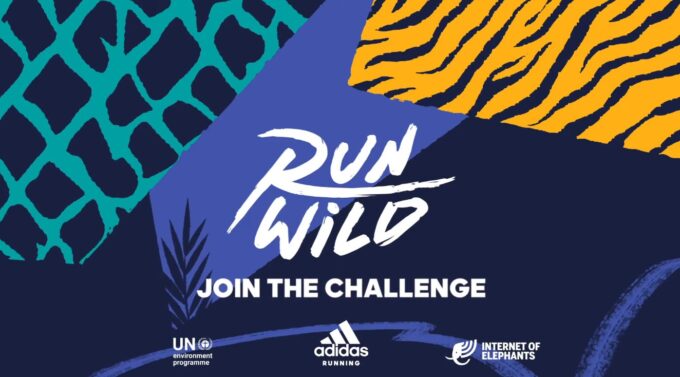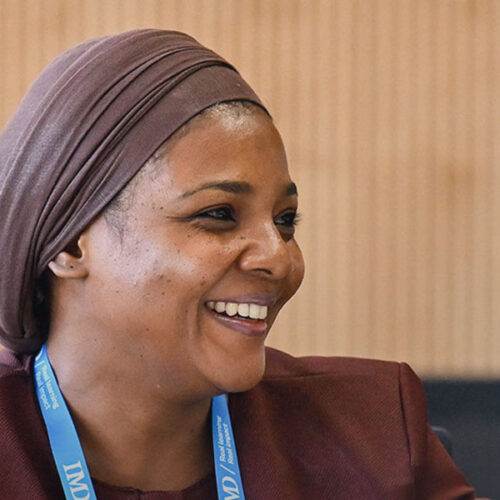
Don’t believe the hype: Making good use of a blackout
The Spanish blackout of April 2025 is an opportunity to strengthen electricity systems that have higher shares of renewables and should not be used as an excuse to slow down the energy...

by Adrian Dellecker Published May 20, 2024 in Sustainability • 10 min read
There is a prevailing assumption that business development must come at the cost of habitats, animals and people that live within them and that conserving nature stands in the way of business. But does this have to be the case?
That is the question that Internet of Elephants, a social enterprise based in Kenya and founded by Gautam Shah, is trying to answer. I spoke with him about his company, the lessons of his journey as an entrepreneur for nature, and the future.
AD: You spent most of your career as an IT consultant for Accenture. How does an IT professional from Chicago end up launching a wildlife conservation start-up in Kenya?
GS: I love being in nature and with animals and always have. When I worked in IT, I would spend my free time going on wildlife holidays. This gave me many spectacular, very emotional experiences, but eventually, I started to feel like I needed to do something to benefit the animals I encountered, as opposed to just being extractive and enjoying them.
The question I kept asking was: What if other people had even a fraction of the feelings I was having? How would that change the world? How would it affect how people buy products or vote? If I could help create a stronger emotional connection between people and nature, even the nature that is in their backyard, that seemed to be one of the most important things that I could do.
AD: How did you get from that realization to building Internet of Elephants?
GS: While there is growing recognition that a healthy environment is crucial for businesses to succeed and that businesses can operate in a way that has less impact on the environment, much of the focus is still a “do no harm” mentality. I wanted to build a business that helped nature.
Carbon neutrality, meeting ESG compliance requirements, or setting up CSR divisions and corporate foundations are all necessary measures for companies to pursue. But this sets a low ambition for the power that companies have on planetary goals. The strongest assets that companies have are their brands, customers, and power to reach people.
If those brands could use the power of that reach to activate their customers with nature,
it could have an exponentially far more significant positive impact on conservation and the planet’s sustainability than any measures focused only on compliance could ever achieve.
By creating engaging experiences and activations for their customers, companies could drive stronger customer loyalty and “stickiness,” creating a strong business case for that engagement, and providing tangible value for nature.
The sector that might have the greatest potential to create this type of impact is the gaming industry. With over three billion people playing games worldwide, it has become larger than the film and sports sectors combined. What if games became a new medium for delivering the stories of nature and our planet and bringing them into people’s daily lives? I wanted to find out for myself.
Build high-impact leadership capabilities for sustainable transformation

AD: You chose a technological approach. What role do you think technology can play in conserving nature?
GS: Of course, there’s nothing better than simply being in nature and seeing wildlife firsthand, whether an orangutan in Borneo or a cardinal in your backyard. But technology, phones, and games will continue to play an ever-larger role in our lives. Rather than fight the trend or lament about a time past, we need to be open to opportunities technology can bring and how it can inspire our desire to experience and protect nature.
With Internet of Elephants, we wanted to connect people directly with individual animals and find out what would happen. What if you could pick up your phone first thing in the morning and check on an elephant in Kenya, an orangutan in Borneo, or even a beaver that that lives around the corner from you? And so, we decided to create a world where those possibilities exist.
AD: So, do you use real animal data for your games?
GS: Primarily, yes. We hypothesized that engagement is stronger if the stories are real and the characters are familiar. So, rather than talking about orangutans anonymously, someone will experience a much stronger connection if we tell the story of a specific orangutan, such as Fio from Indonesia. And with the amount of data being gathered by researchers worldwide, either through GPS collars, acoustic sensors, camera traps, eDNA, or just manual observation, telling those individual stories was even more possible.
Games were the obvious channel to use for this. They get people active, give them a role in a story, provide incentives, present decisions, and offer feedback. One of our first games, called Wildeverse, was about putting you in the shoes of an ape researcher in Borneo and Congo, studying real apes in the wild, just like our partner organizations, Borneo Nature Foundation and Goualougo Ape Project.
But if we can achieve the engagement goal without a game or using real data, then we are willing to explore those ideas, too.
That is how our partnership with Adidas started with the Run Wild campaign.

AD: I imagine even the best games struggle to stand out and reach an audience in a tough market.
GS: Absolutely. When starting Internet of Elephants, we underestimated how difficult it is to get your games in front of an audience. A friend of mine challenged my model, urging me to outsource distribution to the companies that have already figured it out.
That is how our partnership with Adidas started with the Run Wild campaign. If we had built our own app, it would have been exactly how I wanted it to be. But I knew we would struggle to attract even 10,000 users because we would have to get people off their existing fitness apps or make them download ours.
Adidas already had 150 million runners on their platform and the marketing power of Adidas behind it. We were able to reach two million people by integrating the real stories of snow leopards, tigers, pangolins, and other animals based on their GPS data. We embedded the data so runners could compete with a snow leopard named Uillen, for instance, moving more than ten kilometers a day in a friendly interspecies competition. Since the data was real, users had no way of knowing ahead of time how much Uillen would run, and their goals would change. There was always a little tension about keeping up, which was fun.
The real conservation impact will come from figuring out how to create more partnerships like the one we had with Adidas. Brands can have so much influence, and animal content and stories sell, so our key will be to find those synergies so that brands are incentivized to incorporate these activations — not just because they must meet some CSR obligation but because their customers love it, and it helps to keep them engaged.
AD: Let us assume you have global partnerships and are good at engaging people. How do you then get people to act for nature?
GS: There are two elements to that. First, you need to have an engaging, fun experience. People mostly do not want to play an educational game or a “game for good.”
Second, you must put the customer at the center. We need to account for the realities of their daily life and, more so, their existing feelings about climate change, nature, and the planet. This is where the conservation sector often gets it wrong. We think we need to get people to care. We want them to have empathy for nature, but we do not have empathy for them. We must understand the needs, constraints, and pain points of the people we are trying to engage before we can even think about influencing their empathy for nature and wildlife. People already do care. They need to be empowered.
AD: How are you doing that now?
GS: One example is our work with the Monterey Bay Aquarium Research Institute (MBARI) and its corporate partners. We worked with them to develop a game called FathomVerse, which was released in May. It is designed to support a project that captures millions of images from submersibles that explore the ocean, with the aim of generating a comprehensive picture and map of all life under the sea.
The game is strictly in the citizen science space, with clear scientific goals achieved by crowdsourcing the identification of thousands of those images and using that to help train AI models to identify tens of millions of them.
The typical approach for a project like this would be to simply show the images to users in a complicated interface with many options and no feedback loop. But we wanted to engage people further and get beyond just the ultra-enthusiast. So, we decided to create a game that allows large numbers of people to go on “missions” to access the undersea data and help label the things they could see while encountering some amazing (and real) creatures they could never have imagined. We call it “blissful productivity.”
To make this work, we had to find the right balance between scientific accuracy and delighting the user. Sometimes the two don’t go hand in hand, and the constant tension between the two was the most interesting part of the project.
I believe that providing follow-up and feedback is what makes the difference. Even if we cannot give immediate feedback, once multiple players have identified an image, we notify them to let them know. We also tell them how their performance compares to everybody else who played the game and how much smarter the AI has become because of their participation over time.
AD: Where do you see the future for Internet of Elephants?
GS: We have two main things to figure out before going any further. First, we need to get our business model right. Are we an agency, a product company, or a platform company? Whatever it is, we need to lean into the experimental nature of everything we do while staying true to the risk-taking necessary to make it work. I really love what MIT Media lab does in this regard and we are closely examining whether something akin to that makes sense to us.
Second, we need to ensure that everything we do, whatever the model, incorporates brand partnerships and leverages the power of those brands. I believe that will ensure a successful future for us and for many other approaches dependent on the activation of citizens and consumers everywhere. These businesses will hold massive sway on the future of nature.

Build high-impact leadership capabilities for sustainable transformation

Founder of Internet of Elephants
Gautam Shah is a National Geographic and TED Fellow and the founder of Internet of Elephants, a social enterprise that develops groundbreaking digital tools to engage people with wildlife. Through unique mobile games, augmented reality, and data visualizations that use GPS and other data gathered about animals, Internet of Elephants tells the stories of individual animals studied by conversation organizations and researchers all over the world. With this platform, the former IT consultant hopes to catalyze whole new approaches to engaging the public with wildlife, and that digital experiences combined with the power of corporate brands become a force in telling stories of wildlife and its conservation.

Senior Researcher and Writer at IMD
Adrian Dellecker is a political scientist, environmental advocacy expert and innovator. He previously worked as Head of Strategy and Development at the Luc Hoffmann Institute, and has driven and managed a large number of innovative projects and ventures for environmental conservation. He is passionate about helping conservation generate new revenue streams and new audiences to help reverse current trends, and build a future for his and all the world’s children to thrive on a healthy planet. Before joining the Luc Hoffmann Institute, Dellecker was Head of Policy and Advocacy in WWF International’s Global and Regional Policy Unit from 2008 to 2016.

13 hours ago • by Cédric Philibert in Sustainability
The Spanish blackout of April 2025 is an opportunity to strengthen electricity systems that have higher shares of renewables and should not be used as an excuse to slow down the energy...

July 7, 2025 • by Julia Binder, Esther Salvi in Sustainability
Lindström found that expanding its business to Asia required overcoming cultural barriers as much as building new services and infrastructure while adapting itself to local needs. ...

June 16, 2025 • by Núria Ibáñez-García in Sustainability
Driving change in a system where progress can be slow and regulation is tight isn’t easy. But for Núria Ibáñez-García, sustainable transformation starts with steady influence, applied from within. ...

June 9, 2025 • by Julia Binder, Esther Salvi in Sustainability
Dr. Kiri Trier, the beauty giant’s regional sustainability chief, explains her drive to change customer habits and make cutting waste, refilling, and recycling part of their daily bathroom routine....
Explore first person business intelligence from top minds curated for a global executive audience